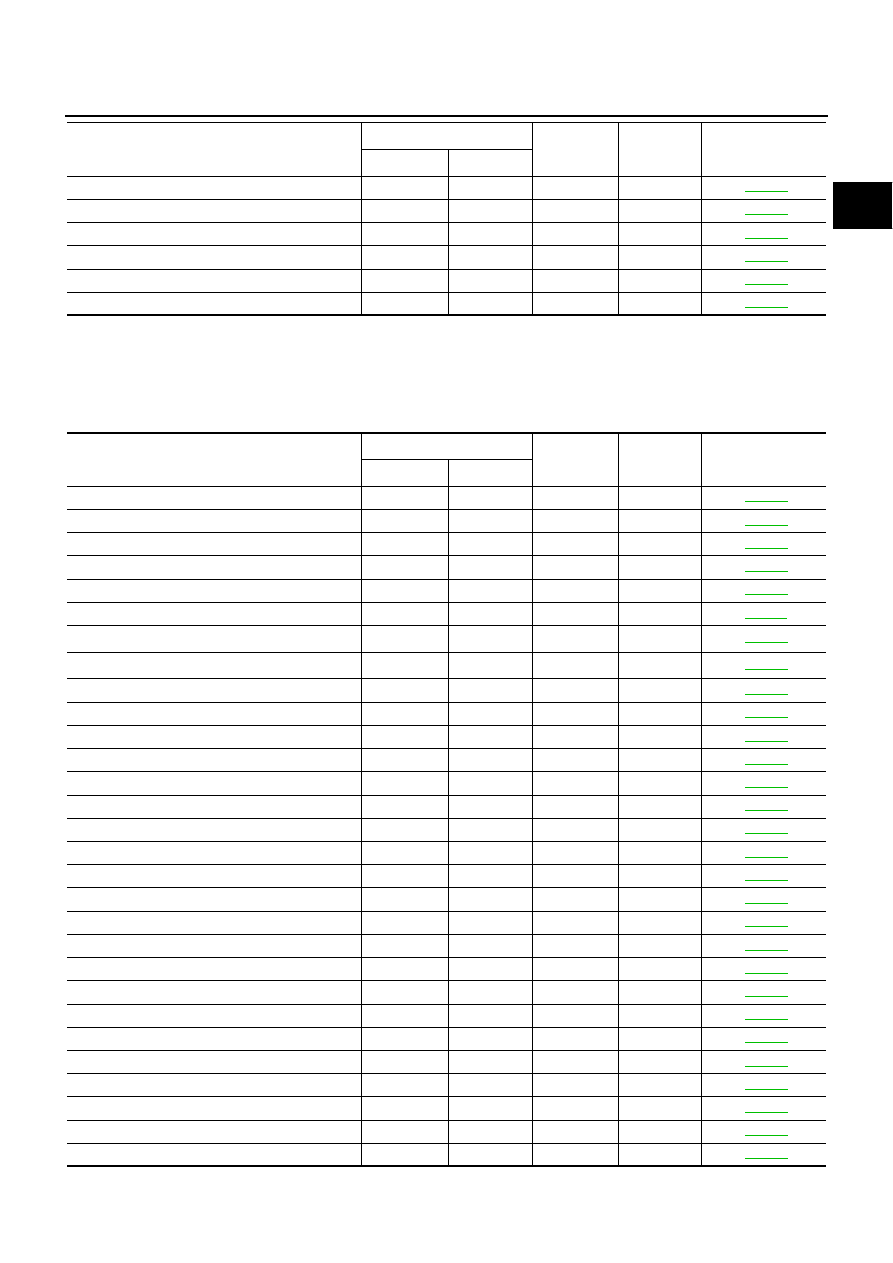Almera Tino V10 (2003 year). Manual - part 96

INDEX FOR DTC
EC-555
[QG (WITHOUT EURO-OBD)]
C
D
E
F
G
H
I
J
K
L
M
A
EC
*1: 1st trip DTC No. is the same as DTC No.
*2: In Diagnostic Test Mode II (Self-diagnostic results), these numbers are controlled by NISSAN.
*3: When engine is running.
*4: The trouble shooting for this DTC needs CONSULT-II.
A/T MODELS
×
: Applicable —: Not applicable
SENSOR POWER/CIRC
P1229
1229
1
×
TP SEN 1/CIRC
P0222
0222
1
×
TP SEN 1/CIRC
P0223
0223
1
×
TP SEN 2/CIRC
P1223
1223
1
×
TP SEN 2/CIRC
P1224
1224
1
×
TP SENSOR
P0221
0221
1
×
Items
(CONSULT-II screen terms)
DTC
*1
Trip
MI lighting
up
Reference page
CONSULT-II
ECM
*2
Items
(CONSULT-II screen terms)
DTC
*1
Trip
MI lighting
up
Reference page
CONSULT-II
ECM
*2
APP SEN 1/CIRC
P0227
0227
1
×
APP SEN 1/CIRC
P0228
0228
1
×
APP SEN 2/CIRC
P1227
1227
1
×
APP SEN 2/CIRC
P1228
1228
1
×
APP SENSOR
P0226
0226
1
×
BRAKE SW/CIRCUIT
P1805
1805
1
×
CAN COMM CIRCUIT
U1000
1000
*4
2
—
CAN COMM CIRCUIT
U1001
1001
*4
2
—
CKP SEN/CIRCUIT
P0335
0335
2
×
CMP SEN/CIRC-B1
P0340
0340
2
×
CTP LEARNING
P1225
1225
2
—
CTP LEARNING
P1226
1226
2
—
ECM
P0605
0605
1 or 2
×
or —
ECM BACK UP/CIRC
P1065
1065
2
×
ECT SEN/CIRCUIT
P0117
0117
2
×
ECT SEN/CIRCUIT
P0118
0118
2
×
ENG OVER TEMP
P1217
1217
1
×
ETC ACTR
P1121
1121
1 or 2
×
ETC FUNCTION/CIRC
P1122
1122
1
×
ETC MOT
P1128
1128
1
×
ETC MOT PWR
P1124
1124
1
×
ETC MOT PWR
P1126
1126
1
×
HO2S1 (B1)
P0132
0132
2
×
HO2S1 (B1)
P0134
0134
2
×
HO2S1 (B2)
P0152
0152
2
×
HO2S1 (B2)
P0154
0154
2
×
HO2S2 (B1)
P0138
0138
2
×
HO2S2 (B2)
P0158
0158
2
×
KNOCK SEN/CIRC-B1
P0327
0327
2
—